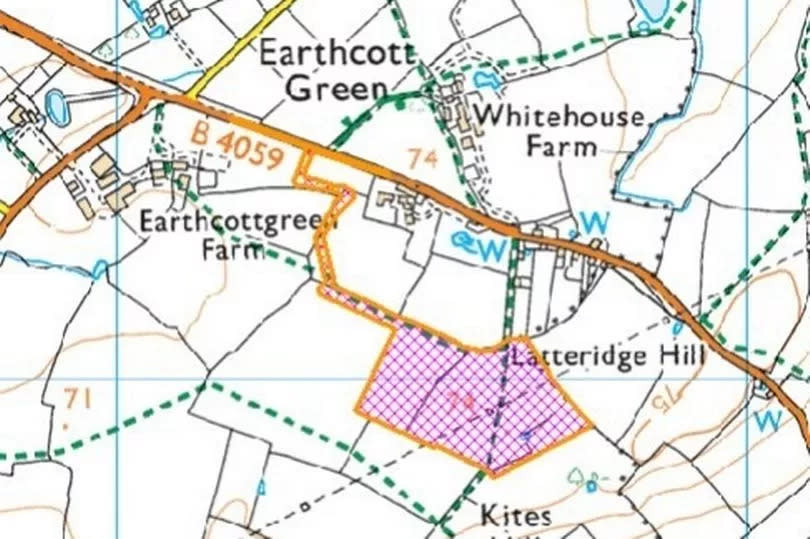Battery compound to store renewable energy could be blocked due to spoiling views

A planned battery compound to store renewable energy and prevent blackouts could be blocked after locals complained their views of the countryside could be spoiled. Councillors will decide next week whether to grant permission for the battery compound in countryside north of Bristol.
The 200-megawatt compound would be built at Earthcott Green Farm in South Gloucestershire, and store energy generated from solar panels. Battery compounds such as these are needed across the country to help transition away from fossil fuels such as gas-fired power stations.
But last month councillors on the development management committee voted to refuse permission, as the batteries would “look horrendous”. The site is in the protected Green Belt, where new buildings can only be constructed under special circumstances.
Read more: Greenbelt battery storage compound refused over toxic gas explosion fears
Read more: People living in richest parts of Bristol live for a decade longer than the poorest parts
The same plans will be voted on by the spatial planning committee on Thursday, June 20, who could overturn last month’s refusal and vote to grant permission. In a new report, planning officers set out why battery compounds are needed to help the transition to renewable energy.
They said: “The growth in use of renewable energy generation to replace conventional power stations has led to there being more stress events for the National Grid to address. There is great importance in the capacity for meeting demand, to ensure against future blackouts, for instance.
“Traditionally, back-up of electrical supply was provided by gas-powered stations. Moving to battery storage is beneficial for carbon reduction. Battery storage allows the storage of renewable energy when solar power production is at its peak in the middle of the day.
“This is not the time of day, however, when demand is at its highest, which is later in the day. Thus the power can be stored and used without being wasted. Power is taken out of the grid and is released at the time when it’s most needed.”

The National Grid relies on a fine balance between how much electricity is generated and how much is used, and the supply must exactly match the demand at all times. Changes in demand were traditionally matched by increasing or decreasing how much electricity was generated by coal and gas power stations, with some told to switch on or off and remain on standby.
But the electricity generated from solar panels and wind turbines is harder to switch on or off, as it depends on the weather. Building battery compounds such as these allows the National Grid to remain well balanced, while also moving away from fossil fuels.
According to the Resolution Foundation, the shift would reduce the country’s dependency on imported fossil fuels, and so exposure to global energy shocks. As the cost of natural gas has risen since the war in Ukraine, a shift to local renewable energy could bring down bills.
The battery compound would store 200 megawatts, which is enough to power 500,000 homes for two hours. Electricity would be generated earlier in the day, stored in the batteries, and then discharged in the evening peak as people return home from work.
Since the plans were first submitted, the government issued updated guidance on the importance of battery storage, and the Energy Security Bill secured royal assent. This means the law now recognises how key battery compounds are in the transition to renewable energy.
The plans include 176 battery containers, each measuring three metres tall and six metres long, and a control tower and control room. The site covers less than six hectares of farmland. As well as spoiling views, other concerns include fire safety as lithium batteries can be flammable.
But Robert Miles, the chief executive of Immersa, the applicants, told councillors last month that normal domestic gas boilers “have a greater chance of explosion and fire than the batteries we use”. Avon Fire and Rescue were also consulted, and did not object to the compound plans.
Several neighbours living nearby wrote to the council, objecting to the plans. Their concerns included building on the Green Belt, spoiling views of the countryside, and the fire risk.
One neighbour said: “Green Belt restrictions are in place for a reason, I am unsure why the developer feels in this instance that these regulations don't apply, and such an inappropriate development is suitable for this area. Do they live in Earthcott Green? Would they want to see that blot on the landscape when they looked out of their windows?
“As residents we accept that the world needs to change, and we need renewable energy. However this proposal itself is not renewable energy and will simply recklessly destroy precious Green Belt land, habitat for wildlife and the tranquillity of the green landscape for which we all have the privilege to live among.
“The sheer scale of this proposal would be visible on the landscape for miles around affecting many areas. This proposal would also affect the property value of those properties backing on to the site.”

 Yahoo News
Yahoo News 
